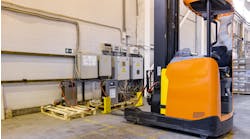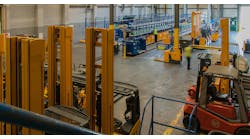The Trend Is Your Friend
The calendar is little more than a convenient device used to bring some semblance of order to our daily lives. It has no relation to what is actually happening. For convenience, most of us start a fresh, new year this month. Yet the challenges of last month or last year remain.
Toward the end of 2001, I spotted a few trends (for lack of a better word) that I think bode well for the future. These happenings have no agenda. They’ll happen when they happen. I suspect the impact of September 11 has or will accelerate these ideas, most of which were apparent before that day. The most encouraging tendency is that transport packaging — and maybe this is the year to start calling it logistics packaging — is getting earlier recognition in the supply chain — and maybe this is the year we start calling it the supply web.
Here’s what I mean: Manufacturers build things, then tell the folks in packaging to figure a way to box it up so it arrives in good shape. And, by the way, do it really cheap and use returnable containers because we read returnables are a trend and we’re a trendy company ’cause our logo says so.
Then someone breaks the news to the guys in the front office about the cost of returnable packaging. Some bean counter even refers to pallets and containers as assets that should be tracked, just like computers, company cars and corporate jets. In previous columns I’ve mentioned radio frequency identification as the Holy Grail of asset tracking in the returnable packaging world. Well, we’re getting a bit closer. The release of Savi Technology’s asset management software and its adoption by CHEP International offers a new way to not only count the beans, but track them as well.
According to managers at Savi, the physical conveyance used to transport the product (read pallets and containers) will also be the carrier of information about the products. CHEP plans to extend this software and other aspects of the asset tracking program throughout its international operations. This includes tracking a significant proportion of its pallet and container pool at more than 400 depots worldwide.
Along this same line, and maybe it’s more intense since September 11, is the need for real-time monitoring of containers. Pacific International Lines recently added 200 Smart Containers (that’s the name and function) for servicing customers. The Smart Container provides accurate and updated information via internal monitoring devices all along the supply chain from the start of the packaging process to the customer’s door — without human intervention.
We’re likely to see more tracking and monitoring of shipments because of a third trend that’s occurring: the development of contingency plans. Many companies have disaster plans (usually for natural disasters), but a contingency plan is a bit different. A contingency plan means the company plans business as usual, only to get its supplies a little differently. Less than a week after September 11 there were slowdowns, even shutdowns at automotive and electronic manufacturing plants along the U.S. border. Limited air cargo hurt retailers of perishable goods.
Although no one is suggesting going back to the days of huge inventories, there have been statements from companies like Ford Motor indicating it will stockpile critical parts — albeit temporarily — in warehouses near some U.S. plants.
What does all this mean to packaging managers? Your customers won’t want more inventory but will want greater inventory visibility and control. Visibility in the information sense if not the physical sense. You’ll have to provide data on everything you ship and when it will be available. The demand for mixed unit loads will most likely increase as your customers ask for exact quantities — yet expect you to own and hold the inventory. This won’t be easy.
Investment managers tell us the trend is our friend, based on the theory that it’s easier to a ride a horse in the direction it’s already going. As a logistics manager, you must understand the trend before deciding how friendly it will be.


